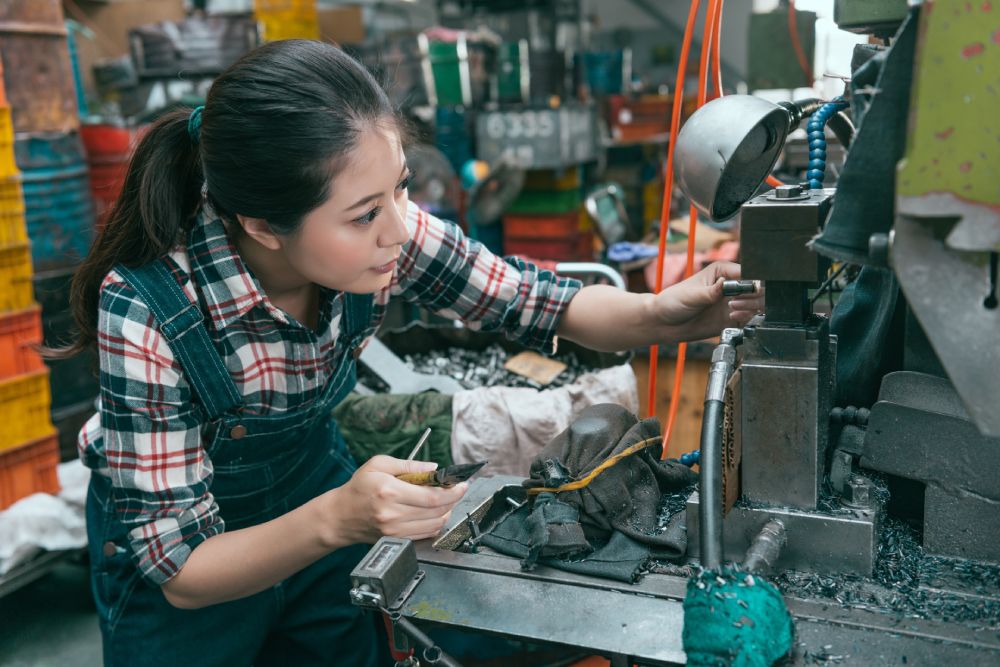India’s Manufacturing Sector Sees Uptick in Women Workforce

Bengaluru, India – As India targets a US$ 7 trillion economy by 2030, increasing female participation in manufacturing becomes imperative. Currently at 25 percent, India’s female labor force participation rate needs to reach 50 percent to elevate GDP growth by 1 percent, as per World Bank estimates. Recent strides show some progress, although overall female workforce engagement in manufacturing remains limited. In a bid to attract multinationals and fuel economic growth, India is eyeing gender parity in manufacturing.
Efforts to diversify the workforce promise innovation, balanced structures, and economic gains. Yet, women remain underrepresented, constituting only 12 percent of the manufacturing sector.
Multinational corporations are pioneering this shift by actively hiring women for manufacturing roles. For instance, Apple’s India factory ecosystem, along with its vendors, has created approximately 100,000 direct jobs, with 72 percent of these roles filled by women. Other industry giants like JSW Steel and Aditya Birla Group are following suit, with over 50 percent of new hires being women. In particular, JSW Steel plans to have over half of its Pulwama facility’s workforce comprised of women.
Moreover, automakers like Tata Motors—23 percent of new hires on the shop floor are women—and MG Motor India are witnessing a surge in female hires, amplifying workforce diversity. Automation, relaxed night shift regulations, and improved workplace amenities are factors contributing to the growing interest in female employment.
Government initiatives, such as those in Kerala, Odisha, and Karnataka, aim to further integrate women into manufacturing through schemes, industrial parks, and financial incentives. Tamil Nadu stands out, boasting a 43 percent female manufacturing workforce, particularly prominent in sectors like textiles, automotive, and emerging fields like electric vehicles and solar cell manufacturing.
Additionally, initiatives by both central and state governments, such as state-backed schemes and incentives for women in manufacturing, aim to further encourage women’s participation in this sector. States like Karnataka have set up dedicated industrial parks and training subsidies for women entrepreneurs, while others like Tamil Nadu have implemented policies to support women in industries ranging from traditional sectors like leather and textiles to emerging fields like electric vehicles and solar cell manufacture.
However, hurdles persist, including biases in families and businesses, access to education and skilling, and overcoming societal barriers. Despite comprising 20.4 percent of MSMEs, women-owned enterprises lag behind, constituting only 70 percent of manufacturing enterprises. Nonetheless, with continued initiatives and opportunities for reskilling and upskilling, particularly in critical sectors like manufacturing, India is poised to harness the full potential of its female workforce, paving the way for a more inclusive and economically prosperous future.
Image Source: Magic Wand Media



 Facebook
Facebook.png) Twitter
Twitter Linkedin
Linkedin Subscribe
Subscribe